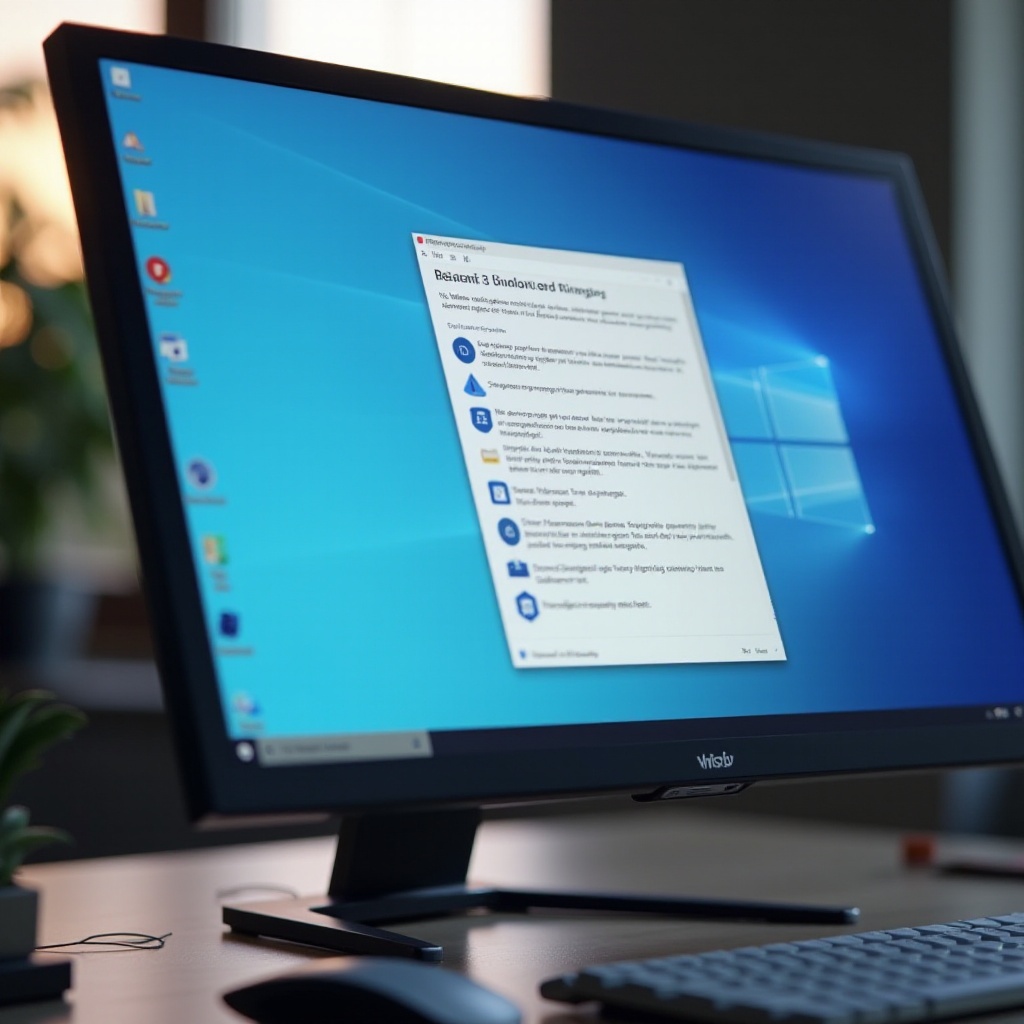Introduction
Dealing with the issue of Quick Access missing in Windows 11 can greatly hinder your daily tasks. Quick Access is a feature that allows for fast access to frequently used files and folders, making it essential for many users. Without it, searching for files becomes a lengthy and tedious process. This article delves into the reasons why Quick Access might disappear and suggests both straightforward and advanced solutions for restoring it. We’ll also provide tips to help prevent this problem from recurring.

Understanding Quick Access in Windows 11
Quick Access in Windows 11 serves as a continuity enhancer by allowing you to pin frequently accessed files and folders for instant access. This feature usually appears in the left pane of File Explorer, showcasing recent files and folders based on your usage. Its sudden absence can turn a usually fluid file navigation process into a cumbersome ordeal. Understanding its functionality emphasizes why its disappearance is immediately noticeable to many users.
Bridging into the reasons for its disappearance, understanding the underlying causes can guide us toward efficient troubleshooting.
Common Reasons Why Quick Access Disappears
There are several reasons why Quick Access might vanish. Identifying these reasons is crucial for effective troubleshooting:
-
System Updates: Occasionally, after updating Windows 11, certain configurations may revert or change, impacting the Quick Access functionality.
-
File Explorer Glitches: Temporary glitches or crashes in File Explorer can also cause Quick Access to go missing.
-
Registry Corruption: Corrupted registry entries can interfere with Quick Access’s operations.
-
Corrupted System Files: Issues with system files can obscure Quick Access or disable its ability to function properly.
Understanding these potential causes lays the groundwork for applying more targeted solutions.
As we transition to resolving these issues, starting with fundamental troubleshooting is a logical first step.
Basic Troubleshooting Steps
Before considering advanced fixes, try these basic troubleshooting methods that frequently restore Quick Access:
- Restart File Explorer:
- Press
Ctrl + Shift + Escto open Task Manager. -
Find and select Windows Explorer and click Restart.
-
Clear Quick Access History:
- Open File Explorer.
- Go to View and select Options.
-
Under the General tab, click Clear to remove the File Explorer history.
-
Toggle on Quick Access:
- Open Folder Options from the File Explorer’s ribbon.
- Re-enable the Show recently used files in Quick Access option.
Should these steps not resolve the issue, further investigation into advanced solutions is necessary.

Advanced Solutions to Restore Quick Access
If basic troubleshooting doesn’t suffice, consider these advanced strategies for a more comprehensive solution:
Using the Command Prompt
- Press
Win + Xand choose Windows Terminal (Admin). - Enter the command and execute:
sfc /scannow - Allow the process to finish, repairing any corrupted files that could be affecting Quick Access.
Editing the Windows Registry
- Press
Win + R, typeregedit, then hit Enter. - Navigate to:
HKEY_CURRENT_USER\Software\Microsoft\Windows\CurrentVersion\Explorer - Locate CleanLaunchState and set its value to
0. - Reboot your system to apply the changes.
Checking for System File Corruption
- Open Windows Terminal (Admin) again.
- Run this command:
DISM /Online /Cleanup-Image /RestoreHealth - Let the tool resolve any system inconsistencies.
These advanced solutions tackle the problem from a technical angle, potentially rectifying deeper issues.
Transitioning to alternative file access methods can be beneficial if Quick Access still remains elusive.

Alternative Methods to Access Your Files
Should Quick Access continue to be unavailable, these alternative methods can maintain efficiency in your file management:
Utilizing Shortcuts and Favorites
- Manually create shortcuts on your Desktop or pin vital folders to the Taskbar.
- Utilize OneDrive or similar cloud services for quick file access across various devices.
Exploring Third-Party Software Options
Consider applications like Directory Opus or Clover, which provide robust file management features comparable to Quick Access.
Moving toward prevention, keeping issues at bay is often easier than troubleshooting.
Tips to Prevent Quick Access Issues
Preventive measures can help maintain uninterrupted Quick Access functionality:
- Regularly update Windows 11 to avoid issues related to outdated system files.
- Establish a routine for cleaning the file history in File Explorer.
- Always back up the Windows Registry before making substantial system changes.
- Use reputable antivirus software to safeguard against file corruption.
Implementing these strategies ensures Quick Access remains a reliable productivity tool.
Conclusion
The disappearance of Quick Access in Windows 11 can be a hurdle in maintaining productivity. By understanding possible causes, employing basic and advanced solutions, and considering alternative methods, you can regain seamless file navigation. Proactive preventive measures will further ensure that this essential feature continues to operate smoothly, facilitating efficient daily activities.
Frequently Asked Questions
Why does my Quick Access keep disappearing in Windows 11?
Quick Access may disappear due to system updates altering settings, File Explorer glitches, registry corruption, or corrupted system files.
Can system updates cause Quick Access to disappear?
Yes, Windows updates can reset certain configurations, potentially affecting Quick Access’s visibility or function.
Is it safe to edit the Windows Registry to restore Quick Access?
Editing the Windows Registry can be safe if done correctly. Always back up the registry before making changes to prevent inadvertent system issues.
